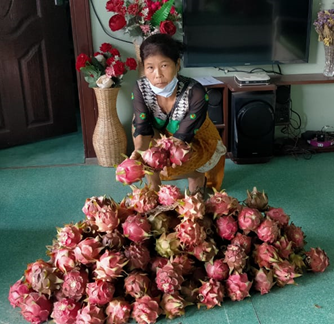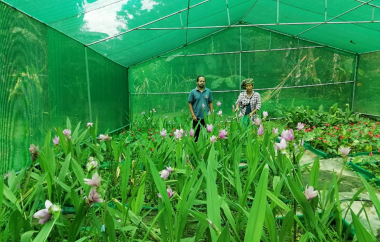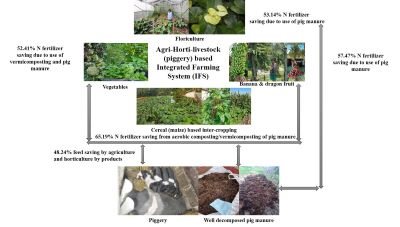The traditional rainfed jhum (slash-and-burn) farming system of Mizoram has long been associated with low productivity and subsistence-level returns. Constraints such as small landholdings, limited investments, and low adoption of modern practices have restricted crop diversification and income opportunities. Recognizing these challenges, ICAR–NEH Mizoram Centre introduced an Agri–Horti–Livestock Integrated Farming System (IFS) model under the Tribal Sub Plan (TSP), demonstrating its potential to transform livelihoods.

A pioneering example is the case of Mrs. F. Lalchhuanawmi, a farmer from Hmarveng, Kolasib district. In 2018–19, she adopted IFS interventions, including polyhouse-based anthurium cultivation, dragon fruit and banana orchards, pig farming, intercropping of seasonal vegetables and pulses, and a water harvesting pond. Critical to the model was the recycling of farm resources livestock manure was processed into compost and vermicompost for use in crops, while horticultural residues were used as pig feed. This closed-loop system reduced dependence on external inputs and enhanced soil health, productivity, and profitability.

Impact Highlights (2018–2023):
•Floriculture (Anthurium): Net income of ₹1.27 lakh with a benefit-cost ratio (B:C) of 1:2.82; external input use reduced by 53%.
•Fruit Crops (Dragon Fruit, Banana, Arecanut): Net income of ₹1.79 lakh with B:C ratio of 1:4.06; input substitution through pig manure reduced costs by 57%.
•Seasonal Crops (Maize + Vegetables + Pulses): Net income of ₹48,200; B:C ratio of 1:1.87 with 65% reduction in external resource use.
•Pig Farming: The most profitable component, generating net income of ₹1.83 lakh and a B:C ratio of 1:2.66.
•Overall Farm Performance: Net annual income increased from ₹1.10 lakh (2018) to ₹5.38 lakh (2023); B:C ratio improved from 1.37 to 2.92.

The adoption of IFS expanded her cultivated area from 0.5 ha to 1.8 ha within five years. System yield, expressed in Maize Equivalent Yield (MEY), quadrupled from 15.26 t/ha to 62.82 t/ha. Cropping intensity rose from 14% to 51%, and the crop diversification index more than doubled, ensuring food security and resilience.
Beyond economic gains, the model ensured year-round food availability, minimized soil loss, enhanced waste recycling, and promoted sustainable practices. Importantly, Mrs. Lalchhuanawmi generated over 1,400 man-days of employment annually, engaging rural youth and women.
Today, she leads the Kolasib Agro Marketing Cooperative (KAMCO) with 30 members, focusing on post-harvest processing and value addition. Under the FOCUS project, she has successfully ventured into commercial dragon fruit juice and wine production, creating market linkages in Aizawl and beyond.

The success of Mrs. F. Lalchhuanawmi illustrates how integrating horticulture, livestock, and crop enterprises can replace traditional jhum cultivation with a profitable, sustainable alternative. The model not only enhanced incomes but also built climate resilience, employment, and entrepreneurship opportunities—making it one of the most impactful IFS demonstrations in Mizoram.
(Source: ICAR Research Complex for NEH Region, Umiam, Meghalaya)







फेसबुक पर लाइक करें
यूट्यूब पर सदस्यता लें
X पर फॉलो करना X
इंस्टाग्राम पर लाइक करें